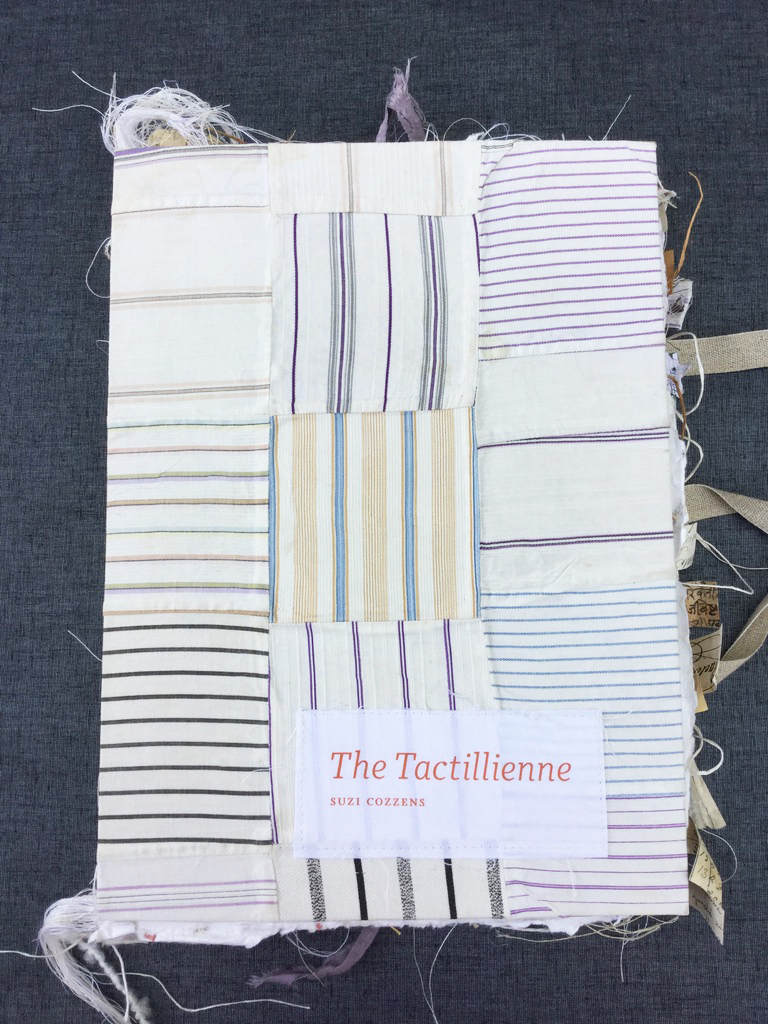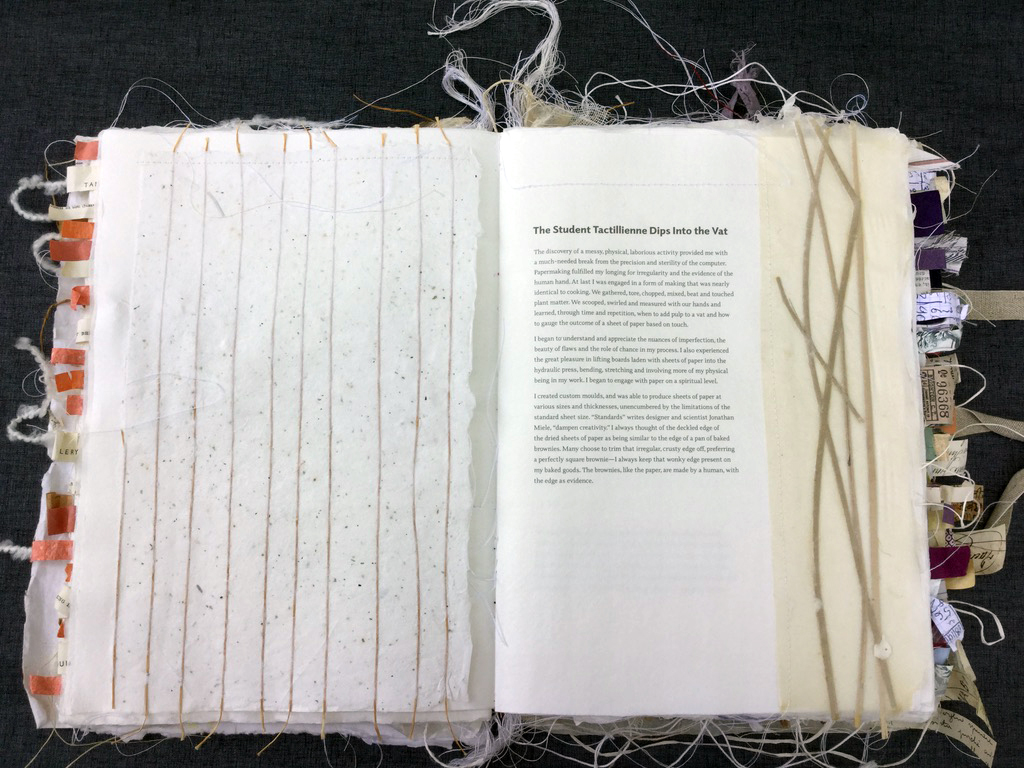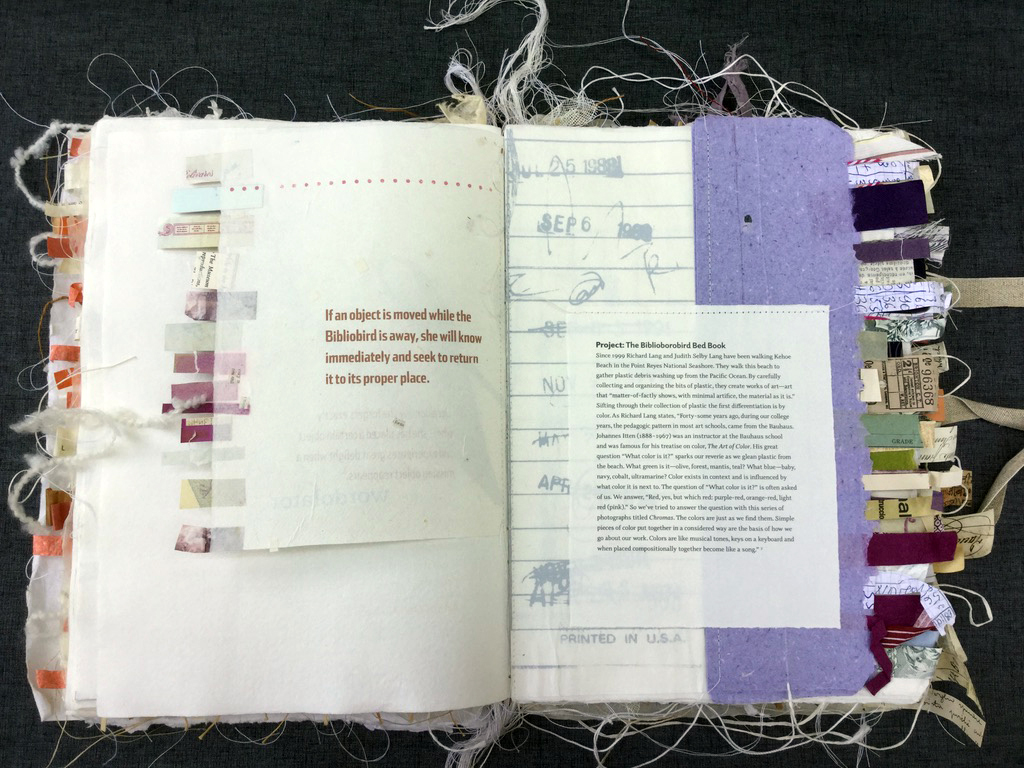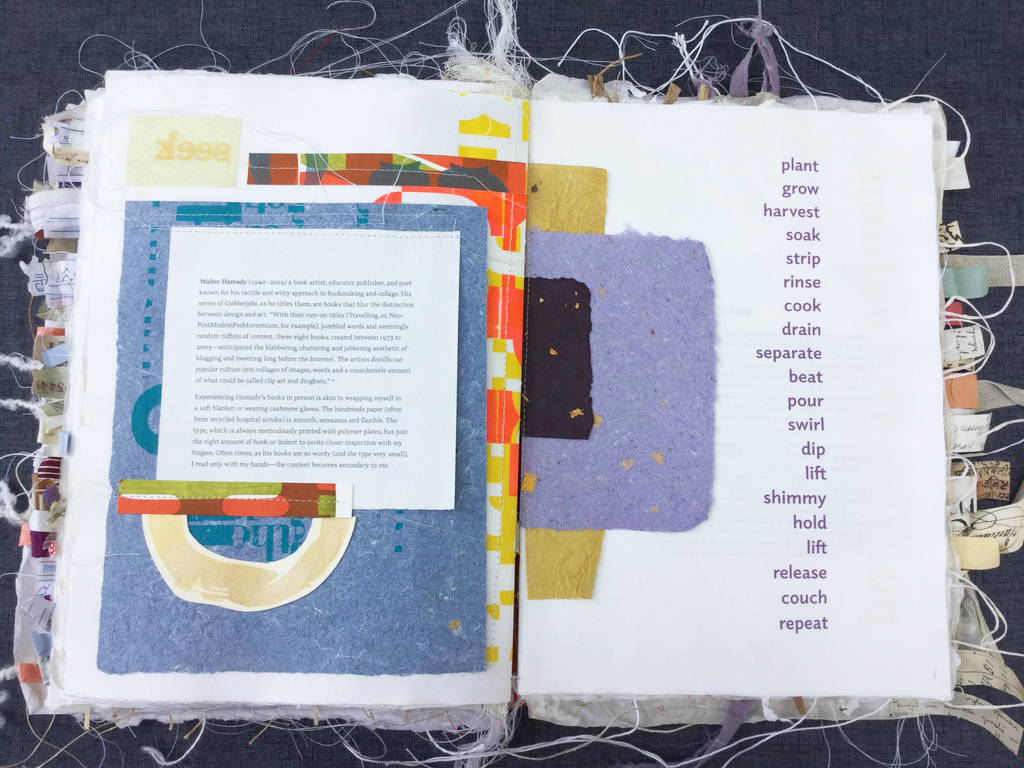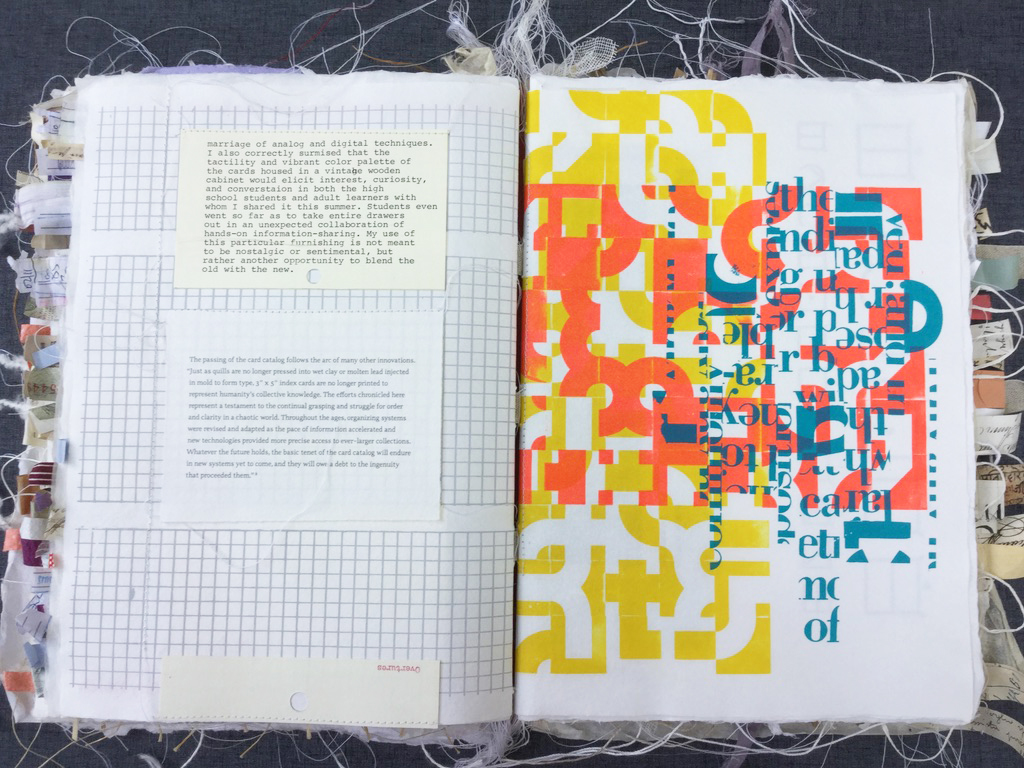Suzette Cozzens,
Providence, Rhode Island
The Tactilliene
2020
Handmade paper, silkscreen printing, digital printing, Letterpress printing, collage, hand-sewn.
14″ x 9″ x 4″
Artist Statement
Tactility simply refers to the ability of being felt or touched and our
responsiveness to stimulation of the sense of touch. The tactile sense is how we interpret the information we get from our skin receptors. When we feel an object, our nervous system receives this information and helps us understand and differentiate pressure, texture, traction, and other tactile qualities of the object. Our tactile system also helps us to understand temperature and to feel pain. There is a relationship between touch and the brain’s emotional centers, helping us make decisions and remember details about tactile experiences that we find pleasant and ones we do not.
The book I am submitting, The Tactillienne, is a part of the trio of
books I have completed for my graduate degree in Graphic Design at
Vermont College of Fine Art (the other two books are The Flaneuse and The Collagista). In this book I combine numerous techniques and tactile examples including: silkscreen printing, silkscreen fabric, polymer plate/letterpress printing, braille, letraset, hand and machine sewing, a variety of handmade papers, vintage cloth, eel skin, shifu and plant matter. The book is a celebration of tactility and emphasizes the importance of tactility in education and acts as a joyous invitation to pause, touch and feel the pages.
As an educator in graphic design, I believe in providing for students a
much-needed break from the precision and sterility of the computer.
Papermaking allows for and embraces irregularity and the evidence of the human hand. We gather, tear, chop, mix, beat and touch plant
matter. We scoop, swirl and measure with our hands and learn, through time and repetition when to add pulp to a vat and how to gauge the outcome of a sheet of paper based on touch.
Silkscreen printing involves numerous steps including washing and
coating a screen, allowing the screen to dry for several hours, exposing imagery, washing and drying the screen again, mixing ink and ultimately printing. I am attracted to teaching this process as it engages the total physical being as one experiences the tactility of the process. There is a rhythm to silkscreen printing that is very similar to preparing a meal—gathering mise en place, assembling ingredients in a user-friendly arrangement, hands working in tandem as the body lifts ,pulls and stacks completed prints. There is often a degree of chance—as light deviation from a plan that happens when the print starts to develop before us. Perhaps an original color palette is not satisfying, so we remix the ink. Possibly there is an overlap which was unintentional, but now we can see its beauty. We are tasked with slowing down. This book also includes my Womanifesto, a declaration of my teaching principles in a predominantly tech-centric discipline (excerpt below):
I am a tactillienne teacher and designer. I am a self-proclaimed digital minimalist. My materials and methods of choice—handmade paper, ephemera, letterpress printing, hand bookbinding—are tactile and sensual. I have been questioned about my choices numerous times, by numerous people, in various tones of voice throughout my 20-year career as a graphic designer and design educator. I have allowed others to influence how I work or apologized for my perfectly acceptable methods as if somehow inferior. I am often regarded as crafty—not to be taken too seriously. The world doesn’t need another blank book, as one colleague put it.
I believe the world does need another blank book. The world needs to fill their blank books with letters, words, thoughts, marks, ideas. We need to never lose sight of the value of that which is tactile and real.


